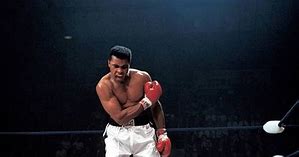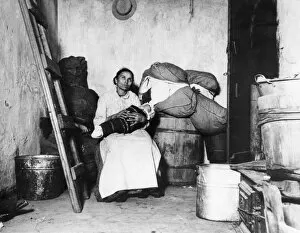Photojournalism


The concept of photography is taking images and processing them. There are hundreds of kinds of photography, but nothing quite like photojournalism. Photojournalism displays images in a manor that tells a specific story. It can be applied to both print and broadcast journalism (video). Photojournalism is distinguished from photography because it takes a more honest and truthful approach. Photography is more of a creative and personal artistic expression.
Making a living as a photojournalist is not easy. Most photojournalists are free-lance and their clients are newspapers or various publications. Their revenue stream is based on completed assignments. According to Medium “In 2015, the average photojournalist… was a self-employed man aged 30-50, earning less than $30,000 a year from photography, while also making some supplementary income from other sources”. A popular organization that represents photojournalists is the NPPA (National Press Photographers Association). So what are some of the benefits of joining a photo agency? Photo agents do many things for photojournalists. According to Blog Agency Access, Photo agents are sales managers, marketing managers, social media managers, therapists, translators, editors, business owners, etc. Payment to be a member of one of these organizations is what earns you these specific benefits.
The practice of photojournalism began in the 1850’s. According to Global Artist Guide “The Golden Age of Photojournalism has been placed primarily during the 1930s and the 1940s, which was a period that was defined by the heavily illustrated magazines and newspapers available throughout Europe and America. Magazines such as Picture Post (London) and Paris Match, Life and Look (both USA) and the Arbeiter-Illustrierte-Zeitung / Berliner-Illustrierte-Zeitung (Berlin) all sought to satisfy the viewers need to understand the new world in which they had found themselves. Newspapers (The Daily Mirror – London, The NY Daily News) also took to publishing this new genre of photograph – although print finishes varied according to the quality of the paper” (Phelan, 2018).
Some great photojournalism examples can be found in publications such as TIME magazine. Many great photojournalists have had their work displayed there. I am very interested in multiple forms of photojournalism, but a photojournalist that I would most like to emulate is Neil Leifer. He is most well known for his famous photo of Mohammad Ali. “Leifer spent a total of 16 years shooting for Sports Illustrated and was the first photographer to have over 100 cover photos to his name. In 1978, he expanded from sports to global news and became the first time-time photographer at TIMEmagazine”(Zhang, 2018). I have always been greatly interested in sports journalism, and I believe that this interest carries over into photography. “Through his career, Leifer has been at ground zero in witnessing emerging trends and techniques in sports photography and photojournalism that are commonplace and taken for granted today. But photographers like Leifer played huge roles in raising the bar for sports photographers everywhere, and the video above is well worth a watch if you’re interested in hearing from one of the greatest to ever play the sports photography game” (Zhang, 2018).
References
Picking the Brain of Renowned Sports Photographer Neil Leifer. (2018, May 16). Retrieved from https://petapixel.com/2018/05/15/picking-the-brain-of-renowned-sports-photographer-neil-leifer/
Report, S., & Report, S. (n.d.). NPPA. Retrieved from https://nppa.org/
The Golden Age of Photojournalism. (2015, April 23). Retrieved from https://www.artistsinfo.co.uk/the-golden-age-of-photojournalism/






